chapter vii
Rituals of the Pentagram
"Those who regard this ritual as a mere device to invoke or banish spirits, are unworthy to possess it. Properly understood, it is the Medicine of Metals and the Stone of the Wise" — Aleister Crowley
The essential function of the rituals of the Pentagram is to assert the dominion of the magician over the chaos of the elemental realm or phenomenal world. This is done through symbolically signifying and magically identifying the magician's alignment and participation in the spiritual ground of the cosmos.
When first learned, these rituals are usually engaged with in a strictly performative manner. Words and gestures are memorized and used without deeper reflection. Familiarity with the ritual can often breed forgetfulness that it is not merely a performance piece, however, but rather a profound prayer and moving meditation. Actual, not merely symbolized identification with the absolute is the true goal of the ritual. This requires mindfulness and concentration in the performance of the visualizations, gestures and vocalizations. Personal issues and problems should be set aside before the manifestation of the sacred space of the ritual. As The Chaldean Oracles of Zoroaster state:
"God is never so turned away from man, and never so much sendeth him new paths, as when he maketh ascent to divine speculations or works in a confused or disordered manner, with unhallowed lips, or unwashed feet. For of those who are thus negligent, the progress is imperfect, the impulses are vain, and the paths are dark."
The Golden Dawn system of correspondence forms a sophisticated language of mysticism and Magick. It is possible to expend a great deal of energy and effort discussing and grappling with the various structural details of the language and its possible permutations. This addresses the syntax of Magick, so to speak. It is possible to get so caught up in this that the semantics of this language become forgotten and left unexplored. With regard to a ritual, for example, it is possible to achieve a very complicated understanding of the way the symbols are juxtaposed, but what is more important is what that juxtaposition means spiritually.
We should therefore ask ourselves to what purpose the establishment of elemental dominion is directed. If this is not to be a ritual of black magic, of mere dominion, this control must be directed by and towards the True Will of the magician. We will discover as we analyze this ritual that its symbolism makes this explicit.
Much attention has been paid in the explanation of these rituals to the Pentagram itself as a symbol. Just as important, however, are the other features of the ritual — the manner in which the movements and visualizations define the space of the performance and into which the Pentagram is inserted and integrated as a component of a larger ritual gesture. We can break the general structure of the most basic Pentagram ritual — the Lesser Invoking or Banishing Ritual of the Pentagram (hereafter referred to as the LRP) — into a few basic components, which we will discuss in turn. These are:
- The Kabbalistic Cross
- The Pentagrams
- The 4 Quarters
- The Cross and Circle conjoined
Before treating these specific components to a symbolic discussion, some general remarks on the ritual as a whole are called for. The ritual itself, as slightly adapted from Crowley's Liber O, is as follows:
The Lesser Ritual of the Pentagram
- Touching the forehead, say Ateh (Unto Thee).
- Touching the breast, say Malkuth (The Kingdom).
- Touching the right shoulder, say ve-Geburah (and the Power).
- Touching the left shoulder, say ve-Gedulah (and the Glory).
- Clasping the hands upon the breast, say le-Olahm, Amen (to the Ages, Amen).
- Turning to the East, make a Pentagram (that of Earth) with the proper weapon. Say (i.e., vibrate) YHVH.
- Turning to the South, the same, but say ADONAI.
- Turning to the West, the same, but say EHEIEH.
- Turning to the North, the same, but say AGLA.
- Extending the arms in the form of a Cross, say:
- Before me Raphael;
- Behind me Gabriel;
- On my right hand Michael;
- On my left hand Uriel;
- For about me flames the Pentagram,
- And in the Column stands the six-rayed Star.
- Repeat (i) to (v), the 'Kabbalistic Cross'.
The invoking and banishing forms of this ritual are identical except for the Pentagrams. The invoking form uses the invoking Pentagrams of Earth. The banishing form uses the banishing Pentagrams of Earth. Explanations of these forms of the Pentagram will be given below. An illustrated chart is at the end of the chapter.
In the G.D. and Thelemic tradition of Magick, the words given in capital letters are vibrated in a special voice. This is done with traditional names of power, which are possessed of symbolic sanctity. The vocal vibration also serves to raise and direct the energy of the body at key points of the ritual. There are a number of methods of vibrating divine names, sometimes involving concurrent visualizations, but there should be at least a loud, deep, clear projection of the voice, with attention.
The names of God used in the LRP are pronounced "Yod-Heh-Vav-Heh", "Ad-oh-ny", "Ee-hay-yay" and "Ahg-lah". AGLA is an abbreviation using the initial letters of the phrase "Atah Gibor le-Ohlahm Adonai", and this can be said in the North in place of AGLA. It means, "Thou art mighty unto the ages Adonai." These four names are called "tetragrammatic names" by Mathers, and share a four-fold structure in common. They represent the Unity of the name as a whole, symbolizing Spirit, expressing itself through its four components, representing the four aspects of manifestation. Their placement at the four quarters therefore recapitulates the underlying structural meaning of the ritual as a whole.
There are visualizations used in the ritual. These are part of the oral traditions associated with this ritual and can vary greatly between individuals and communities of practice. The following is presented as a relatively standard set of suggestions. The individual magician should experiment and develop a personalized version.
While making the Kabbalistic Cross visualize a current of energy in the form of flaming, radiant white light descending through the body and then across the chest to form a cross. Visualize each Pentagram as it is drawn in either white light or a color appropriate to the corresponding element. While moving between the quarters draw a circle, again in white, about the perimeter of the space at heart level. Finally, picture the Archangels about the circle when calling their names. These can be relatively traditional angelic figures of giant stature, robed in their elemental colors and armed with various weapons. Raphael bears a sword for Air, Gabriel a grail for Water, Michael a staff for Fire, and Uriel a disk for Earth.
The Pentagram rituals are optionally performed with the use of a ritual dagger or sword, used to draw the various figures. There are several mutually compatible levels of symbolic interpretation of this action. A dagger can represent the element of air. This symbolizes Yetzirah, the Ruach and Tiphareth, which lies at the center of this layer of the Tree. The dagger therefore acts to summon Yetziratic energy in the ritual for the goal of the equilibration of the elements in the Knowledge and Conversation of the Holy Guardian Angel. It also shows the dominion over Assiah by the immediately higher spiritual domain of Yetzirah, the Astral Light. If a sword is used, this represents the Sephirah Geburah most strongly in the G.D. system. This is the fifth Sephirah, representing the Pentagram, which has five points, as well as the active will, spiritual chivalry, and the disruption of demonic/unbalanced forces through the True Will. On another level of symbolism, the sword represents the lightning flash on the Tree of Life, the pure active creative energy of spirit encompassing all of the Sephiroth.
If no implement is used, it is an oral custom to vibrate the divine names of the quarters while making the sign of the Enterer, and following this with the sign of Silence. These two signs are paired together, and are the first symbolic signs given to the initiate of the Golden Dawn, corresponding to the Neophyte grade of that system.
The first sign is called the sign of the Enterer, or the Projecting sign, and is made by stepping forward with one foot and vigorously thrusting out the arms at the level of the eyes, the palms held flat with fingers extended. This symbolizes the projection of the divine Will of the magician out into their universe in the Imaginal form of a current of magical energy. The magician is thereby represented as a center of light in the cosmos. As The Book of the Law says, "Every man and every woman is a star." [AL I: 3] This sign is also called the sign of Horus, and is associated with the active, martial form of this deity. Horus is a symbol of the power of the Holy Guardian Angel in The Book of the Law. Therefore this sign symbolizes the Holy Guardian Angel acting through the agency of the magician.
The second sign is called the sign of Silence, and is made by stepping back with the extended foot so that the feet are parallel. The right arm is dropped to the side while the left forefinger is placed on the closed lips, the other fingers being held loosely in a fst. It seals the current of energy released by the sign of the Enterer, and represents the magician at rest, absorbed in Gnosis. If the first sign is that of magic, the second represents mysticism. The sign of Silence is also called the sign of Harpocrates, the infant Horus.
The Kabbalistic Cross
The Kabbalistic Cross is self-contained and can be performed as its own ritual. It also interlocks within the larger framework of the LRP. As used by the Golden Dawn, it is based on an interpretation of a passage from Eliphas Levi, who wrote:
"The Sign of the Cross adopted by Christians does not belong to them exclusively. This also is kabalistic and represents the oppositions and tetradic equilibrium of the elements. We see by the occult versicle of the Lord's Prayer, which we have cited in our 'Doctrine', that it was originally made after two manners, or at least that it was characterized by two entirely different formulae, one reserved for priests and initiates, the other imparted to neophytes and the profane. For example, the initiate said raising his hand to his forehead, 'For thine,' then added 'is,' and continuing as he brought down his hand to his breast, 'the kingdom,' then to the left shoulder, 'and the mercy' — then clasping his hands, he added, 'in the generating ages.' Tibi sunt Malkuth et Geburah et Chesed per aeonas — a Sign of the Cross which is absolutely and magnificently kabalistic, which the profanations of Gnosticism have lost completely to the official and militant Church. This Sign, made after this manner, should precede and terminate the Conjuration of the Four [elements]."
The Kabbalistic Cross is made on the body, signifying that one's self is an expression of the symbols and meanings described by the ritual gestures. The cross has a vertical and horizontal dimension. The vertical component represents the divine reality. The horizontal is material or manifest existence. The vertical line is drawn first to show the ontological priority of spirit, which extends to all planes of reality both above and below our world. The horizontal axis is then described, such that the two axes of matter and spirit meet in a point at the heart. A mathematical point has no extension, and so this point, which is in the heart, represents Hadit, the true Self. It is also the mystical nothing, that silent place where spirit and matter meet and are one.
In a different and equally valid symbolism, the Kabbalistic Cross represents the manifestation of the Tree of Life on and as the human body. This expresses the Hermetic concept of the unity of the macrocosm and the microcosm. The Tree of Life, representing the 'Body of God' and the aspects of the cosmos is shown to simultaneously be the body of the magician and the aspects of their being. Here is the doctrine of anthropocosmos — that the exalted physical and Imaginal body of the magician is the body of God.
The middle pillar of the Tree is first established, extending from Kether above the head to Malkuth at the feet. This shows that the equilibrium of opposites precedes and is more fundamental than the duality of contending forces represented by the Pillars of Mercy and Severity, which are designated by the horizontal bar of the cross.
There are other meanings of the Kabbalistic Cross. The cross generally represents the 4 elements, governed by and revolving about the central point of the cross, which stands for Spirit. Therefore the symbol as a whole represents manifestation as spatial extension radiating from the central point of Spirit. Different systems have different elements assigned to particular arms, but as a general symbol of the four-fold it is unnecessary to view particular arms as particular elements, but rather see the symbol as showing simply the idea of four elements in general. This symbolizes the body of the magician, or microcosm, governed and sustained by Spirit, located at the heart. The heart in the Kabbalistic Cross is therefore a symbol of Love and Will conjoined, as it is the site of an impulse to manifestation (Will), and is also traditionally the seat of the emotions and therefore of Love.
In its upright form the cross also represents the trinity heading the pendant lower levels of reality:
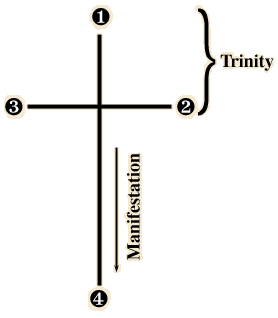
There are many more depths of meaning to the cross, which further reflection and contemplation can reveal. It is not merely a Christian sectarian icon. Probably the most thorough work on this subject is Rene Guenon's Symbolism of the Cross.
Certain words are said when making the Kabbalistic Cross. The phrase is, "Atah Malkuth, ve Geburah, ve Gedulah, le ohlahm Amen." This means, "Unto thee is the kingdom, the power and the glory unto the ages Amen." This is the final line of the Lord's Prayer as given in the King James Bible, translated into Hebrew to emphasize the Kabbalistic manner with which the passage is interpreted in the Golden Dawn rituals. The manner of this interpretation is partially defined by the portions of the body touched while saying the phrase. Atah (unto thee) is spoken while touching the forehead to represent Kether. The 'thee' therefore refers to the highest spiritual being. Malkuth (kingdom) is said while indicating the lower portion of the body assigned to the Sephirah of the same name, which represents material reality. Therefore reality is the kingdom of the highest spiritual being. The horizontal crossbar is drawn while reciting ve geburah, ve gedulah (the power and the glory), indicating that the two Pillars of Severity and Mercy are referred to. The hands are then held over the heart while saying le ohlahm Amen (unto the ages, Amen). One way of understanding this whole movement is to see it as saying that reality and its apparent dualities, polarities and contradictions are eternally ruled by and reconciled in the highest Spirit as designated by the verticality of the cross and by the heart, in which the initial verticality comes to rest in union with the horizontal.
In making the Kabbalistic Cross there is a Thelemic tradition of touching the heart while making the vertical gesture, in between saying Atah and Malkuth, and vibrating the name Aiwass. This is the name of Crowley's Holy Guardian Angel and the narrator of The Book of the Law. This entity (or whatever Aiwass actually is) acts as a symbol of the mediation or communication between Thelemites and the divine reality through The Book of the Law and its message. It is appropriate to place this name at the heart because, as already described, the heart is the point of contact between the self and God through Will and Love. Therefore it is an apt location to signify the awakening of the Thelemic Gnosis. Additionally, the heart is associated with the Sephirah Tiphareth, which in the A∴A∴ system is the place where the personal Knowledge and Conversation between the Adept and their Angel first occurs.
There is an oral tradition amongst Thelemites that upon achieving knowledge of the name of one's own Holy Guardian Angel, that one should substitute this name for that of Aiwass when making the Kabbalistic Cross. If one's relationship to one's angel makes this appropriate, then this can certainly be a meaningful addition to the ritual, as well as a way of personalizing the performance to one's own initiatory current.
One powerful visualization that can be done while performing the Kabbalistic Cross is to see oneself as growing larger in stature. One should imagine one's self expanding during the ritual to tremendous proportions at the limits of one's imagination. This exercise at expansion of consciousness seems to have archetypal resonance, and its simplicity belies its effectiveness.
Tibetan Vajrayana techniques often involve the expansion of one's visualized body or the body of a deity to giant proportions. Sometimes the expanded body becomes sacrificed in some manner, as in the practice of Chod. One is reminded of myths of a primal giant who is slain by some deity and cut in two to create the earth and sky. Odin and Ymir, for example, or Marduk and Tiamat. There is also Purusha, the primordial man in the Vedas, whose death is symbolized by the fire sacrifice. A basic idea held in common by these traditions is that of the Giant's body representing some aspect of the divine Pleroma which sacrifices itself, or is sacrificed for the world to come into being and/or be sustained. These are powerful associations when one considers that the sign of the cross is being made on the body during these visualizations. One is identifying oneself with the universal dying and rising god of regeneration and renewal, with all of the spiritual depths associated with this.
The Pentagrams
There are a number of immediately perceivable symbolic meanings to the Pentagram's form. It has five points, representing the four elements and Spirit. It is drawn with a unicursal, or single unbroken line, which shows the unbroken unity of that Spirit with its elemental emanations. The figure fits exactly inscribed within a circle, also demonstrating its dependence from the divine unity. It is in the shape of a human being, which shows the identity of the symbol with the magician themselves. It is in the traditional shape of a star. As it is written in The Book of the Law, "Every man and every woman is a star." [AL I: 3] The five points also represent the fifth Sephirah Geburah, showing the active power of the magician over the elements in service of the consciousness of the Angel. The five points carry the same meaning as the cross of the elements with the center point representing spirit. Additionally, the Egyptians used a five pointed star to represent the goddess Nuit. Nuit, in The Book of the Law, states that her symbol is, "The Five Pointed Star, with a Circle in the Middle, & the circle is Red." [AL I: 60]
As we can see, the symbolism of the Pentagram serves as a visual resume of the entire ritual. Placing the Pentagram at each of the four quarters shows the elementals or other forces of those quarters the dominion of Spirit over them, as embodied in the magician.
This dominion of Spirit is explicitly encoded in the Pentagram's geometry. The line segments of the Pentagram are in exact extreme and mean proportion to each other. This means that in a line containing two segments, the proportion of the shorter segment to the longer segment is the same proportion as the longer segment to the line as a whole.
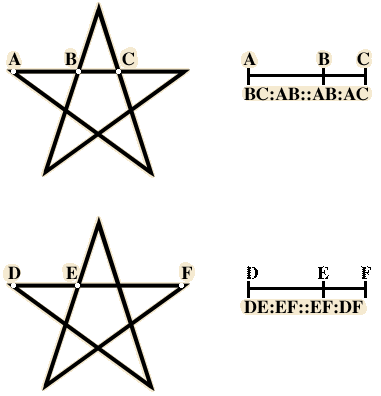
In sacred geometry, this symbolizes that the relationship of the microcosm to the lower planes is a reflection of the relationship of the macrocosm to the microcosm. Or as a mentor of mine put it concisely, "We are an Angel to our demons, and a demon to our Angel."
In the Golden Dawn system particular elements are assigned to the points of the Pentagram. These correspondences are based on the cross formed in the heavens by the positions of the fixed signs of the zodiac.


(WATER)

(AIR)


(FIRE)

(EARTH)
SPIRIT


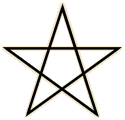


Particular elements may be invoked or banished, depending on how the Pentagram is drawn in relation to the elemental points. The general rule is that a Pentagram whose first line is drawn towards the point of a particular element invokes that element. A Pentagram whose first line is drawn away from the point of a particular element banishes that element. The exceptions to this rule are the Pentagrams of Spirit. These use the two line segments that are not used by the other elemental Pentagrams. These segments connect the two active elements of Fire and Air and the two passive elements of Water and Earth. To invoke or banish Spirit in its Active phase begin the Pentagram with the segment connecting Fire and Air. Begin the line sloping upwards to invoke, downwards to banish. To invoke or banish Spirit in its Passive phase begin the Pentagram with the segment connecting Water and Earth. Begin the line sloping upwards to invoke, downwards to banish. The forms generated by these rules are given on a chart at the end of this chapter.
In the LRP the invoking or banishing Pentagrams of Earth are used because this element traditionally can be understood as containing, or being a consolidation of the other three. In the Sepher Yetzirah, for example, Earth is the result of the equal combination of the three 'Mother' elements of Air, Fire and Water. Therefore, the Earth Pentagram should be understood within the context of the LRP as a stand in for all of the other Pentagrams.
The difference between the invoking and banishing forms of the LRP is relatively subtle, and consists largely in a distinction of emphasis. The Lesser Invoking Ritual of the Pentagram invokes a current of balanced spiritual force into the ritual space. The Lesser Banishing Ritual of the Pentagram performs the same function, but makes more explicit the specific directing of that energy to dissolve and banish any unbalanced forces. As the LRP is often used to open a ritual space with a preliminary clearing of negative energy, the banishing form will probably be the one most used in this context. However, the invoking form can still be used for the same purpose and, especially if used less frequently, can often have an extra 'kick'. It is also particularly effective when performed by itself as a stand-alone ritual.
The Four Quarters
These are the four directions to which Pentagrams, divine names and angels are applied. The general attribution is to the four elements, to which the magician in the center stands as Spirit.
In the Pentagram rituals, the cross of the four quarters is understood as being formed by the intersection of the paths of Samekh and Peh on the Tree of Life. This is the central key point of equilibrium in the outer college of A∴A∴. The Man of Earth, ascending in their aspiration along the path of Samekh towards Tiphareth must cross the path of Peh, the Tower. This represents the ordeals of elemental equilibration, of the alignment of the physical, emotional, cognitive and intentional aspects of the phenomenal self to the True Will. The symbolism of Samekh and Peh is parallel to, but independent of the symbolism associating particular elements and archangels to the quarters, as these are not based on the Sephiroth that surround that point on the Tree.
At the cusp of each quadrant a Pentagram is inscribed, a divine name vibrated, and an archangel visualized and invoked. All four worlds are thereby placed in balanced equilibrium in relation to each other. The divine name is Atziluthic, the archangels are Briatic, the Pentagrams in terms of their existence as visualized objects are Yetziratic, and the performance of the ritual itself in a physical space relates to Assiah.
The Cross and Circle Conjoined
This symbol is formed by the circular movements of the magician about the four quarters. This implies the form of a circle and cross conjoined as such:
⊕
This is itself an important ensign of Thelemic Magick. The prototype is the symbol of the rosy cross, the emblem of the Rosicrucian movement. The Thelemic understanding of the rose cross is that it represents the union of subject and object in Samadhi, and the continual embrace of Nuit and Hadit. The cross is consciousness, extended upon the rose/circle of the infinity of possible experiences of that consciousness. The cross is life, and the rose light. Their union is of the nature of love, expressed through liberty.
A few things should be said about the original context of meaning of the rose cross, as used in the Rosicrucian manifestos.
- It is very similar in type to symbols found in the so-called 'Emblem Books' of the 1600s. The cryptic emblems depicted in these volumes were not necessarily intended to have a single fixed meaning, but were rather designed to open the soul through their contemplation to a higher spiritual reality.
- The rose cross comes from a Christian context, with all of the associations and depths the Christian mysteries give to the symbol.
- It is very similar to Martin Luther's coat of arms. Rosicrucianism has historically been very closely tied to Protestantism. This connection is clear in The Manifestos themselves. Although this association only captures the exoteric context of the movement's initial matrix of manifestation, it nevertheless shows that Rosicrucianism has had a commitment to political and religious freedom as an integral aspect of its spiritual vision even in its initial manifestation. This has at times been obscured by its more capitalistic and/or ignorant manifestations, but Thelema is an explicit inheritor of this aspect of its tradition. In this sense, as well as in others, Thelema is a Rosicrucian religion.
* * * * *
The Lesser Ritual of the Pentagram forms a kind of basic framework upon which other rituals are based. In the rituals that have come down to us from the Golden Dawn, there are two versions of a more advanced Pentagram ritual. One is called the Greater Ritual of the Pentagram (GRP), and is found in Crowley's Liber O. The second is given in Regardie's The Golden Dawn and is named the Supreme Invoking Ritual of the Pentagram (SIRP). It is probable that the SIRP is a later ritual expanded from the older GRP and developed by the Stella Mautina, a successor organization to the original Golden Dawn. As the SIRP is identical to the GRP, except for the addition of a few gestures and words of power, the structure of the GRP will be addressed first.
The Greater Ritual of the Pentagram serves as a kind of higher octave, or elaborated version of the Lesser Ritual of the Pentagram, with similar magical effects and symbolism. The ritual is as follows:
The Greater Ritual of the Pentagram
- Perform the Kabbalistic Cross.
- Go to the East. Make the invoking Pentagram for Spirit Active, visualized in white light. Vibrate EHEIEH. Give the sign of the Rending of the Veil.
- Make the invoking Pentagram of Air, visualized in yellow light. Vibrate YHVH. Give the sign of Shu.
- Trace circle clockwise to South. Make the invoking Pentagram for Spirit Active, visualized in white light. Vibrate EHEIEH. Give the sign of the Rending of the Veil.
- Make the invoking Pentagram of Fire, visualized in red light. Vibrate ELOHIM. Give the sign of Thoum-ash-Neith.
- Trace circle clockwise to West. Make the invoking Pentagram for Spirit Passive, visualized in white light. Vibrate AGLA. Give the sign of the Closing of the Veil.
- Make the invoking Pentagram of Water, visualized in blue light. Vibrate EL. Give the sign of Auramoth.
- Trace circle clockwise to North. Make the invoking Pentagram for Spirit Passive, visualized in white light. Vibrate AGLA. Give the sign of the Closing of the Veil.
- Make the invoking Pentagram of Earth, visualized in green light. Vibrate ADONAI. Give the sign of Set Fighting.
- Complete tracing the circle clockwise to East. Return to center. Perform Kabbalistic Cross.
To perform the banishing version of the above, simply substitute banishing forms for all of the Pentagrams.
The ritual follows the basic pattern of the LRP with a few expansions. First and most obviously, the specific invoking Pentagram of the particular elemental quarter is used, rather than the generic Earth Pentagram. These can be visualized in either of two sets of colors.
| Element | Elemental color | Sephirotic color |
|---|---|---|
| Fire | Red | Green for Netzach |
| Water | Blue | Orange for Hod |
| Earth | Green or Black | Black for Malkuth |
| Air | Yellow | Purple for Yesod |
I personally find the former attributions more immediately intuitively appropriate. They match the four colors used for the quarters in Buddhist Tantric Mandalas, although the specific attributions of colors to elements diverges in that system from that used in the Golden Dawn. Either green or black can be used for Earth. I prefer green, as it signifies more clearly that manifestation is the place of the completion or growth of Spirit (green being the color of vegitation), rather then the negation or opposite of Spirit. The alternative color correspondences relate to the lowest four Sephirah on the Tree of Life, to which the elements are assigned in the G.D. system.
In addition to the Pentagram of the particular quarter's element, an additional Pentagram is drawn at each of the four stations. These are the Pentagrams of Active and Passive Spirit. Active Spirit is given with Air and Fire, Passive Spirit with Water and Earth. The Spirit Pentagrams should be visualized in white light. The Spirit Pentagram is drawn at each quarter before the Pentagram of the specific element. This is to further reinforce that the invocation of any particular force is at the behest of, and under the authority of universal spiritual force. The divine name Eheieh is used with the Spirit Active Pentagrams, AGLA with Spirit Passive.
The divine names used with the elemental Pentagrams themselves are based on a Sephirotic correspondence, but a different one then that of the four lowest Sephiroth. The name used for Earth is Adonai. This is meant to be a shortened form of Adonai Ha-Aretz, the divine name of Malkuth. The divine name for the air quarter is YHVH, which is intended as a shortened form of YHVH Eloha Ve-Daath, assigned to Tiphareth. Water is El, for Chesed, and Fire Elohim or Elohim Gibor for Geburah. This gives the following correspondences.
| Element | Sephirah | Sephirotic color |
|---|---|---|
| Fire | Geburah | Red |
| Water | Chesed | Blue |
| Air | Tiphareth | Yellow |
| Earth | Malkuth | Black |
The colors are the colors of the Sephirah in the Queen scale, and are the source of this attribution to the elements, corresponding as they do to the first set of color to element correspondences given above. There is also a deeper meaning to this manner of associating these Sephirah to the elements. This can be seen by looking at the relationships of the Sephirah upon the Tree of Life. The Tree can be seen as an assemblage of three trinities, representing the same principles reflected at higher or lower levels of reality. The highest triad are the Supernals of Kether, Chockmah, and Binah, representing God in itself, so to speak. Below that is the triad of Chesed, Geburah and Tiphareth — themselves emanations of the Supernal triad representing through their colors in the Queen scale Fire (Red, Geburah), Water (Blue, Chesed) and Air (Yellow, Tiphareth). These in turn emanate Earth as Malkuth and/or the lower Tree. Therefore, through these names this particular part of the ritual is shown to be from the perspective of the Adept 'looking down' the Tree, from the perspective of the higher Sephiroth, rather than the initiate 'looking up', from the perspective of the lower Sephiroth as in the LRP.
The ritual calls for various signs to be given at the quarters. These are the signs of the various Golden Dawn Outer Order grades as aligned to the four elements. They are used to further reinforce the elemental symbolism in each quadrant. The signs are:
| Element | Sign | Golden Dawn Grade |
|---|---|---|
| Spirit Active | Rending of the Veil | Dominus Liminus |
| Spirit Passive | Closing of the Veil | Dominus Liminus |
| Fire | Thoum-ash-Neith | Philosophus 4°=7 |
| Water | Auramoth | Practicus 3°=8 |
| Air | Shu | Theoricus 2°=9 |
| Earth | Set Fighting | Zelator 1°=1 |
These signs are Western mudras. They are gestures and movements intended to signify and symbolize some aspect of spiritual truth. Their performance should be approached with both intention and attention. There is some variation in the oral tradition as to the precise formulation of these signs. The following are my own interpretations.
Spirit in its Active and Passive phases is symbolized by the signs of the Opening/Rending and Closing of the Veil. The sign of Opening or Rending the Veil is made by placing the palms together at the heart, then separating the hands while stepping forward, as if opening a curtain and passing through it. It represents Spirit Active. The sign of the Closing of the Veil is performed by taking a step backwards while bringing the extended hands together at the heart, as if closing a curtain. It symbolizes Spirit Passive. Both signs utilize the symbolism of a veil, representing the barriers of limited perception and understanding that conceal the spiritual nature of reality from us. The signs are those of the grade of Dominus Liminus, which stands before Tiphareth and represents by the passage through a veil (called Paroketh) the breakthrough of the personal consciousness of Yesod into the illuminated consciousness of Tiphareth and achievement of the Knowledge and Conversation of the Holy Guardian Angel. The beginning or ending of the signs is at the heart, the Imaginal seat of the Angel.
The sign for the element of Fire is that of the grade of Philosophus. The sign is made by raising the hands to form an upright triangle at the forehead by joining the tips of the thumbs and forefingers. This can be seen as representing the directing of the will, which corresponds to Fire, vertically in spiritual aspiration. An upright triangle also represents the element of Fire in traditional Alchemical notation. The sign is said to be that of the Egyptian goddess Thoum-ash-Neith, or Neith, typically represented with a human head and carrying a bow and arrows. In the Golden Dawn system this God-form is assumed by the four officer called the Daudachos, whose duty is to consecrate both the initiates and the temple with incense. The incense represents fire to the purifying water of the parallel officer the Stolstices.
The sign for Water is that of the grade of Practicus and is made by raising the hands to form a downward pointing triangle at the heart by joining the tips of the thumbs and forefingers. Just as the upward pointing triangle is the alchemical glyph for Fire, the downward pointing triangle signifies Water. Here the symbolism is that of the descent of the divine spirit of the Angel into the soul, centered at the heart, made receptive to its infuence. The sign is also made over the heart to show that this divine receptivity is accomplished through love. This is said to be the sign of Auramoth, or Mut, the consort of Amoun at Thebes. This is the Egyptian God-form assumed by the Stolistes in the G.D. ceremonies to purify the temple and the initiates with water.
The sign of the element Air is the sign of Shu. This is the Egyptian deity of the atmosphere who stands separating the Sky (Nuit) and the Earth (Seb), allowing for the world to come into being in the space created between them. This represents the 'creation' or awareness of the world which is made possible by the minds ability to make distinctions, the rational faculty being represented by Air. The sign is made by imitating the posture of Shu holding up the sky. The hands are held above the head as if supporting an object, the elbows forming a right angle.
The element of Earth is associated with the sign of Set Fighting. It is made by stepping forward with the right foot while fully extending the right hand upwards and forwards. The left hand is extended downwards and backwards. Both palms are held open and facing forward. It represents the aggressive stance of the god Set. This deity is often approached in the Thelemic tradition as a personification of materiality, and the divine power expressed in matter, particularly through physical functions such as sexuality. Therefore, this god is aptly associated in this context with the Sephirah Malkuth, the grade of Zelator and the element of Earth.
All of the elemental signs can be enhanced in their performance by the adoption of the god-form associated with that sign. This procedure is discussed in chapter 9.
There seems no real reason why the archangels are omitted at the quarters, other than that the Spirit Pentagrams are perhaps supposed to fill the same role of symbolizing Briah. Depending on their preferences, individual magicians can fill in this step using the wording from the LRP.
The change in God names and the use of the specific elemental Pentagrams are the most important distinctions that differentiate the Greater Pentagram Ritual from the Lesser. The grade signs and other embellishments add emphasis on the particular elements, so as to increase the concentration of the invocation. The Supreme Invoking Ritual of the Pentagram, an elaboration on the GRP from the Golden Dawn's successor group the Stella Mautina, is identical to the GRP except for a few additional such emphases.
The SIRP really makes only two substantive additions to the GRP. First, symbols are drawn within the Pentagrams. The Pentagrams of Spirit all have the eight spoked wheel of Spirit drawn within them. The elemental Pentagrams all have the fixed sign of the zodiac associated with their element drawn and visualized within them. These are the signs of Aquarius for Air, Scorpio for Water, Taurus for Earth, and Leo for Fire. In the original G.D. material, the outline of an eagle's head is drawn in profile in place of the sign of Scorpio. The eagle is the Kerubic guardian of Water, as it represents the highest of the three octaves of Scorpio, the other two being symbolized by a snake and a scorpion.
Secondly, various words and phrases in the angelic language of Enochian are said, in addition to the divine names, while drawing the Pentagrams at the quarters. The words said with the Spirit Pentagrams are from the Tablet of Union and correspond to the lines of the four elements. The words declared with the elemental Pentagrams are drawn from the center line of the Enochian tablets of the appropriate element.
The SIRP also includes the archangels from the LRP and does not include the use of the Dominus Liminus signs with the Spirit Pentagrams.
The Supreme Invoking Ritual of the Pentagram
- Perform the Kabbalistic Cross.
- Go to the East. Make the invoking Pentagram for Spirit Active, visualized in white light. Vibrate EXARP while drawing Pentagram. Draw wheel within Pentagram. Vibrate EHEIEH while making wheel.
- Make the invoking Pentagram of Air, visualized in yellow light. Vibrate ORO IBAH AOZPI while drawing Pentagram. Draw Aquarius symbol within Pentagram. Vibrate YHVH while making this symbol. Give the sign of Shu.
- Trace circle clockwise to South. Make the invoking Pentagram for Spirit Active, visualized in white light. Vibrate BITOM while drawing Pentagram. Draw wheel within Pentagram. Vibrate EHEIEH while making wheel.
- Make the invoking Pentagram of Fire, visualized in red light. Vibrate OIP TEAA PEDOCE while drawing Pentagram. Draw Leo symbol within Pentagram. Vibrate ELOHIM while making this symbol. Give the sign of Thoum-ash-Neith.
- Trace circle clockwise to West. Make the invoking Pentagram for Spirit Passive, visualized in white light. Vibrate HCOMA while drawing Pentagram. Draw wheel within Pentagram. Vibrate AGLA while making wheel.
- Make the invoking Pentagram of Water, visualized in blue light. Vibrate EMPEH ARSEL GAIOL while drawing Pentagram. Draw the head of the eagle within Pentagram. Vibrate EL while making this symbol. Give the sign of Auramoth.
- Trace circle clockwise to North. Make the invoking Pentagram for Spirit Passive, visualized in white light. Vibrate NANTA while drawing Pentagram. Draw wheel within Pentagram. Vibrate AGLA while making wheel.
- Make the invoking Pentagram of Earth, visualized in green light. Vibrate EMOR DIAL HECTEGA while drawing Pentagram. Draw Taurus symbol within Pentagram. Vibrate ADONAI while making this symbol. Give the sign of Set Fighting.
- Complete tracing the circle clockwise to East. Return to center. Invoke the four archangels and perform the Kabbalistic Cross, as in LRP.
All of the various rituals discussed so far in this chapter are held in common by both the Golden Dawn and Thelemic traditions. This is not surprising, as the entire Golden Dawn system is contained within the larger structure of Thelemic spirituality. Additionally, there are explicitly Thelemic rituals, written by Crowley, which utilize the G.D. rituals as inspiration. With regard to the Pentagram rituals, Crowley's version is a ritual known as the Star Ruby. There are two versions of this ritual, one published in The Book of Lies in 1913, the other printed in an appendix of the later Magick in Theory and Practice. This chapter will focus on the later, more definitively Thelemic version from Magick in Theory and Practice. The two versions are identical except for the initial divine names placed at the quarters.
The title comes from a gemstone known for the 6 pointed star pattern that forms when light is refracted through the concentrations of a substance called rutile within the stone. The symbolism of the 6 rayed star and the rarity and value of the stone refer to the consciousness of the Adept in Tiphareth. There are several deeper layers of symbolism that can be gleaned from a close study of the Holy Book Liber 66: Liber Stellae Rubeae, where the Star Ruby is also the yoni of the Goddess.
The ritual is given the number 25 by Crowley. This is 5 squared, the number of the Pentagram enhanced by itself. The text of the ritual as found in Magick in Theory and Practice is as follows:
Liber 25: The Star Ruby
- Facing East, in the center, draw deep deep deep thy breath, closing thy mouth with thy right forefinger prest against thy lower lip. Then dashing down the hand with a great sweep back and out, expelling forcibly thy breath, cry ΑΠΟ ΠΑΝΤΟΣ ΚΑΚΟΔΑΙΜΟΝΟΣ.
- With the same forefinger touch thy forehead, and say ΣΟΙ, thy member, and say Ω ΦΑΛΛΕ, thy right shoulder, and say ΙΣΧΥΡΟΣ, thy left shoulder, and say ΕΥΧΑΡΙΣΤΟΣ; then clasp thine hands, locking the fingers, and cry ΙΑΩ.
- Advance to the East. Imagine strongly a Pentagram, aright, in thy forehead. Drawing the hands to the eyes, fling it forth, making the sign of Horus and roar THERION. Retire thine hand in the sign of Hoor-paar-Kraat.
- Go round to the North and repeat; but say NUIT.
- Go round to the West and repeat; but whisper BABALON.
- Go round to the South and repeat; but bellow HADIT.
- Completing the circle widdershins, retire to the center and raise thy voice in the Paian, with these words ΙΩ ΠΑΝ, with the signs of N.O.X.
- Extend the arms in the form of a Tau and say low but clear: ΠΡΟ ΜΟΥ ΙΥΓΓΕΣ, ΟΠΙΣΘΩ ΜΟΥ ΤΕΛΕΤΑΠΧΑΙ, ΕΠΙ ΔΕΞΙΑ ΣΥΝΩΧΕΙΣ, ΕΠΑΡΙΣΤΕΡΑ ΔΑΙΜΟΝΕΣ, ΦΛΕΓΕΙ ΓΑΡ ΠΕΡΙ ΜΟΥ Ο ΑΣΤΗΡ ΤΩΝ ΠΕΝΤΕ, ΚΑΙ ΕΝ ΤΗΙ ΣΤΗΛΗΙ Ω ΑΣΤΕΡ ΤΩΝ ΕΞ ΕΣΤΗΚΕ.
- Repeat the Cross Qabalistic, as above, and end as thou didst begin (1 and 2).
As can be seen, the Star Ruby follows the basic structure of the Golden Dawn Pentagram rituals rather closely, and its general form and purpose can be understood in terms of the discussion of those spells. There are a number of interesting additional features as well.
The spell begins with the magician making the sign of silence while inhaling deeply — drawing down deep inside themselves to the place of the power of this Hermetic silence. Then from this silence breaks forth a divine command. This is "Apo Pantos Kakodaimanos" — "Away from here all evil spirits." This serves to disperse all illusion of distraction and disruption such that only the True Will remains. Assuming that the entire purpose of the ritual is not accomplished in this moment, or should the magician wish to further signify, elaborate and/or celebrate this state, the rest of the ritual may be performed. To some extent this caveat goes for every element of this or any ritual. Any true magical symbol recapitulates the whole of the Great Work.
The Star Ruby version of the Kabbalistic Cross uses the same basic movements and symbolism but with Greek words giving a slightly different emphasis on its meaning. The words are:
| Location on Body | Greek | English |
|---|---|---|
| Forehead | Soi | Unto thee |
| Genitals | O Phalle | Oh Phallus |
| Right Shoulder | Ishchuros | Strength, might |
| Left Shoulder | Eucharistos | Eucharist |
| Heart | IAO | IAO |
The first vertical movement seems to affirm that the highest principle is identical with the 'Phallus'. Crowley means much more than the merely physical genitalia here, of course. Rather, referred to here is that "Lord secret and most holy, source of life, source of love, source of liberty, force of energy, fire of motion — that art the essence of every true god that is upon the surface of the Earth." [from the collects of Liber XV]
The gesture of the crossbar of the Kabbalistic Cross then affirms that this principle as it manifests in oneself is both "strong" (i.e. erect) and mighty as well as of the nature of a sacrament. It both gives and receives, and is both active and passive. It is of the nature of the synthesis of all planes and of all opposites. There is a complication at this point resulting from Crowley's use of a gender specific term (Phallus rather than Kteis) to refer linguistically to this principle. It is the interpretation of some prominent Thelemites that 'Phallus' (with a capital 'P' is meant as a gender neutral or gender inclusive term. It seems that at times in Crowley's system this can be seen as correct, at other times this is a more problematic reading. This is a complex issue and individuals should therefore be critical and mindful in their engagement with this aspect of the system. Some Thelemites use the phrase 'Phalle Kteis' at this point in the ritual. Also, the Omega used before the word Phalle in the ritual as it stands is probably intended by Crowley to represent the divine Kteis or Yoni.
IAO is a name of God used by the Gnostics. In the Thelemic tradition it is a divine name appropriate to Tiphareth. It also conceals a formula of justification through suffering which will be discussed at more length in chapter 12.
After making the Kabbalistic Cross the magician proceeds about the perimeter of the circle in a counterclockwise direction placing Pentagrams and divine names at the quarters, as in the standard format of the Pentagram rituals. This counterclockwise direction of movement shows that the Star Ruby is essentially a banishing ritual. The ritual calls for the Pentagrams to be 'thrown' out rather than drawn in the air. Some individuals who perform this ritual do nevertheless draw the Pentagrams, either the generic Earth banishing Pentagram used in the LRP, or the Pentagram of the particular element of the quarter. The significance of projecting out the Pentagram is shown by it being done in the sign of Horus from the Ajna Chakra, which represents the location of the Imaginal visionary faculty associated with the actual visualization process of the Pentagram itself.
The name of a particular Thelemic deity is placed at each quarter with the Pentagrams. There is a tradition of also visualizing some aspect of the god in question. The text specifies that the name of the deity should be said in a particular manner. One roars the name of Therion, says Nuit, whispers Babalon and yells Hadit. This serves to characterize the 'feel' of the gods. It actually works very well and is highly recommended.
The question arises as to which elements correspond to which quarters in this ritual. As discussed in chapter 3, there are two main directional schemes: By the winds/Terrestrial and Sidereal.
| Deity | Direction | Terrestrial | Sidereal |
|---|---|---|---|
| THERION | East | Air | Fire |
| BABALON | West | Water | Air |
| NUIT | North | Earth | Water |
| HADIT | South | Fire | Earth |
Consonant with the symbolism of the other Pentagram rituals one might expect the Star Ruby to use the Terrestrial attributions, and indeed the ritual is performable as such with appropriate elaboration of the visualizations. However, there are reasons to believe that Crowley may have intended the Sidereal correspondences to be used. The clue to this is the ritual Liber 5 vel Reguli, discussed in chapter 10. In this ritual the identical Thelemic deities are placed to the quarters as in the Star Ruby. However, while Sidereal correspondences are used in Reguli, they are modified in a manner unique to that ritual (cf. chapter 10) and direct application to the Star Ruby is problematic.
The magician should determine their own answer to this question through experimentation with both attributions to find the one that works best for them. The Terrestrial correspondences are my own preference, and align the symbolism of the Star Ruby clearly with that of the other Pentagram rituals that have already been discussed. Nevertheless, the sidereal schema seems to some more appropriate to the stellar nature of the deities involved, acting to raise the ritual to a higher level, as it were.
When the particular Thelemic deities are given elemental attributions it produces some interesting meanings. Being deities, and therefore Briatic archetypes, these four characters can have multiple possible correspondences depending on the ritual context. By associating them to a particular element and direction it is possible to throw into relief important features of the god-forms. The following reflections use the Terrestrial correspondences:
As Air, Therion is the Ruach centered in the Sun of Tiphareth. He is the lion of light, a solar god mediating between highest and lowest, Malkuth and Kether meeting in Tiphareth — beast, god and man as One.
Babalon as Water shows her as the embodiment of the feminine divine principle. The weapon of Water is the chalice, which is here the Holy Grail borne by Babalon. Placed in the West, she is opposite her consort Therion in the East and further represents the presence of the divine feminine power over the apparent darkness of the setting sun. This particularly alludes to the Goddess — powers relating to the mysteries of death.
Nuit as Earth shows her aspect as the possibilities of experience of the manifest universe — as phenomenal reality itself. North is the direction of the pole star — the zenith of the vault of heaven. Nuit is also placed opposite her compliment Hadit.
Hadit is free. As such he is the innermost flame and free of the Self, the incarnation of the True Will. Will itself corresponds to free.
There are many deeper levels of meaning to these attributions which further contemplation can reveal.
The magician now returns to the center of the circle and makes the signs of NOX, meaning naught or nothing. There are five of them. Crowley describes them in the ritual Liber 5 vel Reguli (given in full in chapter 10) as follows:
Puella or girl is made by the magician "standing with feet together, head bowed, his left hand shielding his phallus, and his right hand shielding his breast (attitude of the Venus de Medici)."
Puer or boy is performed by the magician "standing with feet together, and head erect. Let his right hand [the thumb between index and medius] be raised, the forearm vertical at a right angle with the upper arm, which is horizontally extended in the line joining the shoulders. Let his left hand, the thumb extended forwards, and the fingers clenched, rest at the junction of the thighs [attitude of the Gods Mentu, Khem, etc.]."
Vir or man is done with "the feet being together. The hands, with clenched fingers and thumbs thrust out forwards, are held to the temples; the head is then bowed and pushed out, as if to symbolize the butting of an horned beast (attitude of Pan, Bacchus, etc.)."
Mulier or woman is made so that "the Feet are widely separated, and the arms raised so as to suggest a crescent. The head is thrown back [attitude of Baphomet, Isis in Welcome, the Microcosm of Vitruivius]."
Finally Mater Triumphans or mother triumphant is performed such that "the feet are together; the left arm is curved as if it supported a child; the thumb and index of the right hand pinch the nipple of the left breast, as if offering it to that child."
These signs can be corresponded to the five letters of the Pentagrammaton as follows:
| Letter | Element | Sign (Latin) | Sign (in English) |
|---|---|---|---|
| Y | Fire | Vir | Man |
| H | Water | Mulier | Woman |
| SH | Spirit | Mater Triumphans | Mother Triumphant |
| V | Air | Puer | Boy |
| H | Earth | Puella | Girl |
There is an oral tradition, probably deriving originally from the Berkeley OTO, which performs the signs in the order of the four worlds from Fire to Earth, followed by Spirit. This represents the descent of the divine reality through the four worlds into the circle, establishing the manifestation of Spirit.
Crowley himself seems to have used the signs in a somewhat different, and equally valid, manner. NOX refers to the 'naught' or nothing of absolute Spirit. In the Golden Dawn system, the formula of attainment of Tiphareth is represented by the letters LVX, referring to the Latin lux, meaning light. For the A∴A∴ grades above Tiphareth, Crowley used the formula of NOX to represent the supernal nothingness, or "the light higher than eyesight" [AL II:51], in contrast to the LVX formula of the lower grades. These concepts are articulated in greater depth in The Book of Lies. For Crowley the NOX signs represent the following A∴A∴ grades:
| A∴A∴ Grade | Sign | Sephirah |
|---|---|---|
| Major Adept 6°=5 | Puer | Geburah |
| Exempt Adept 7°=4 | Vir | Chesed |
| Babe of the Abyss | Puella | Abyss |
| Babe of the Abyss | Mulier | Abyss |
| Master of the Temple 8°=3 | Mater Triumphans | Binah |
Under this usage the signs are given in the above order, to symbolize an ascent through these grades of attainment.
The supernal naught is called in The Book of Lies the Night of Pan, and so while making these signs the magician should intone IO PAN. Pan is the all, The Reality inclusive of all planes. The letters 'I' and 'O' of the 'IO' further represent the Phallus and the Yoni, respectively. The union of their duality discloses the unity of Pan.
The NOX signs, in either approach, serve as an invocation of Spirit into the center of the circle amongst the four elements, at the center of their cross.
Upon completion of the NOX signs, the magician says, "Pro mou Iunges, ophistho mou Teletarchai, epi dexia Sunoiches, eparistera Daimones." This means, "Before me Iunges, behind me Teletarchi, on my right Sunoiches, on my left Daimones."
These are the Star Ruby equivalent of the Briatic or Archangelic guardians used in the other Pentagram rituals. The names come from The Chaldean Oracles of Zoroaster, which presents a scheme of divine emanations from the absolute, itself described as a paternal fire of Mind (Nous). The Iunges, Teletarchi and Sunoiches are primary emanations lying above the demiurge (i.e. above the Abyss). Daimones is simply the Greek plural name for spirits. 'Demon' is the modern corruption of this word. In Greek, however, daimon refers to any spirit, not just an evil one. Its context in this ritual suggests that the higher Briatic daimons are meant, of which aspects of the Holy Guardian Angel can be experienced at times as a type. There are various traditions as to how to visualize these entities. The simplest is to see them as angelic figures as in the LRP.
Having established the Briatic hierarchy at the quarters, the magician now states, "Phlegi gar peri mo aster ton pente, kai ente stele ho aster ton hex hexsteke." Which means, "About me flames the Pentagram, and in the column stands the six rayed star." This is exactly as in the LRP, but in Greek rather than in English.
The Star Ruby concludes with a repeat of its version of the Kabbalistic Cross.
We should note, having completed our examination of the major Pentagram rituals, that all of the ceremonies so far discussed invoke or banish the elements as a group. What should one do to invoke or banish a particular element? There is no single methodology in this, and there are a variety of oral traditions. Neither the original Golden Dawn, nor the Stella Mautina had a version of the Pentagram ritual to invoke a particular element, though other Golden Dawn groups and traditions of practice have developed various methods of elaborating the original Pentagram material to serve this purpose.
The original G.D. method of summoning the particular elements comes from the openings of the elemental degrees and uses the Enochian tablets. Less complicated is to utilize some kind of variation of the Pentagram ritual. There is latitute in this, but probably the simplest method would be to perform the LRP in its banishing form, then turn to the appropriate quarter of the element one wishes to summon. Make the invoking Pentagram of Spirit Active or Passive as in the GRP, then draw the invoking Pentagram of the selected element, visualized in the appropriate elemental color. Declare words to the effect that the element in question has been invoked. When it is time to banish the particular element and close the ritual space, turn back to the appropriate quarter. Make the banishing Pentagram of the element, again visualizing it in the requisite color. Follow with the banishing Pentagram of Spirit in either its Active or Passive form as in the GRP, then perform the Lesser Banishing Ritual of the Pentagram in its entirety.
There is also a much more meditative rather than magical method. Sitting in one's asana visualize one's aura as glowing radiant white, which then gradually shifts to the color of the invoked element, slowly and fully filling the ritual space with light of that color. When the ritual is completed, the light is visualized as gradually drawn back to the personal aura and transmuted back into white. This is a very passive method, and is best used in contemplation of some spiritual aspect of the desired force, rather than in active use of the force for some end. A more magical method would be preferable for the latter aim.
The original Golden Dawn system's standard magical method for the invocation of a particular element is used during the opening of the four elemental grades of 1°=10 through 4°=7. This technique is generally today called "Opening by Watchtower". A concise outline of this procedure is given in Crowley's Liber Chanockh. It is also presented in The Golden Dawn and in more detailed focus in Israel Regardie's book Ceremonial Magic. There is substantial use of Enochian material in these complicated but powerful rituals. They are probably best used by someone familiar with the G.D. system, perhaps one who has worked the elemental grades in question, or else one with a thorough understanding of the Enochian system. The method requires the use of a set of Enochian Watchtower tablets set at the four quarters. This technique is mentioned as a suggestion of a more advanced method. Readers are referred to the cited sources for details.
| INVOKING | BANISHING | |
|---|---|---|
| ACTIVE SPIRIT  |
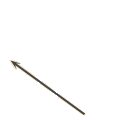 |
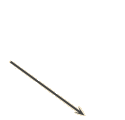 |
| PASSIVE SPIRIT  |
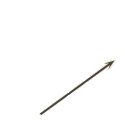 |
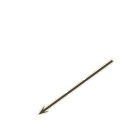 |
FIRE |
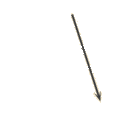 |
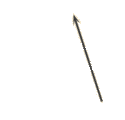 |
WATER |
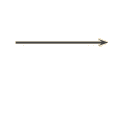 |
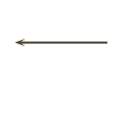 |
AIR |
 |
 |
EARTH |
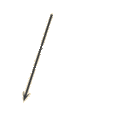 |
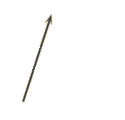 |
From "Notes on the Lesser Ritual of the Pentagram" in Crowley, Aleister, Magick: Book 4, pg. 692.
Westcott, William Wynn, The Chaldean Oracles Attributed to Zoroaster, pg. 40-41 (Fragment #183).
Adapted from Liber O in Crowley, Aleister, Magick: Book 4, pg. 618.
Mathers, S. L. MacGregor (ed.), The Kabbalah Unveiled, Penguin Arkana, New York, New York, 1991, pg. 31.
Levi, Eliphas, Transcendental Magic, pp. 233-234.
Guenon, Rene, Symbolism of the Cross, Sophia Perennis, Ghent, New York, 1996.
See, for example Sangpo, Khetsun, Tantric Practice in Nying-Ma, Snow Lion Publications, Ithaca, New York, 1996, pp. 161-166.
Personal conversation with Ebony Anpu, 1997 e.v.
Eshelman, James (tr.), Sepher Yetzirah: The Book of Formation, College of Thelema, Los Angeles, California, 1996.
A good introduction to Rosicrucianism is McIntosh, Christopher, The Rosicrucians, Samuel Weiser, York Beach, Maine, 1997. Another good study, from a Golden Dawn perspective, is Case, Paul Foster, The True and Invisible Rosicrucian Order, Samuel Weiser, York Beach, Maine, 1989.
Crowley, Aleister, Magick: Book 4, pp. 619-620. This ritual has been rewritten for clarity for this book, but no details have been changed.
Regardie, Israel, The Golden Dawn, pp. 285-286. This ritual has been rewritten for clarity for this book, but no details have been changed.
Crowley, Aleister, The Book of Lies, Samuel Weiser, York Beach, Maine, 1980, pp. 60-61. Crowley, Aleister, Magick: Book 4, pg. 569.
Ibid, pg. 590.
Hymenaeus Beta XI°, "Woman's Conference Address", The Magical Link — New Series #1, Fall 1997, OTO, pp. 8-10.
See, for example Maroney, Tim, "The Included Middle: Facts and Phallacies", The Scarlet Letter — Volume 5 #2, 1998, Scarlet Woman Lodge OTO, Austin, Texas, pp. 6-11.
Crowley, Aleister, Magick: Book 4, pp. 573-583.
Ibid, pp. 574-576.
Ibid, pp. 782-783.
Liber Chanockh is included in Crowley, Aleister, Gems from the Equinox, New Falcon Publications, Scottsdale, Arizona, 1974, pg. 385-430.


